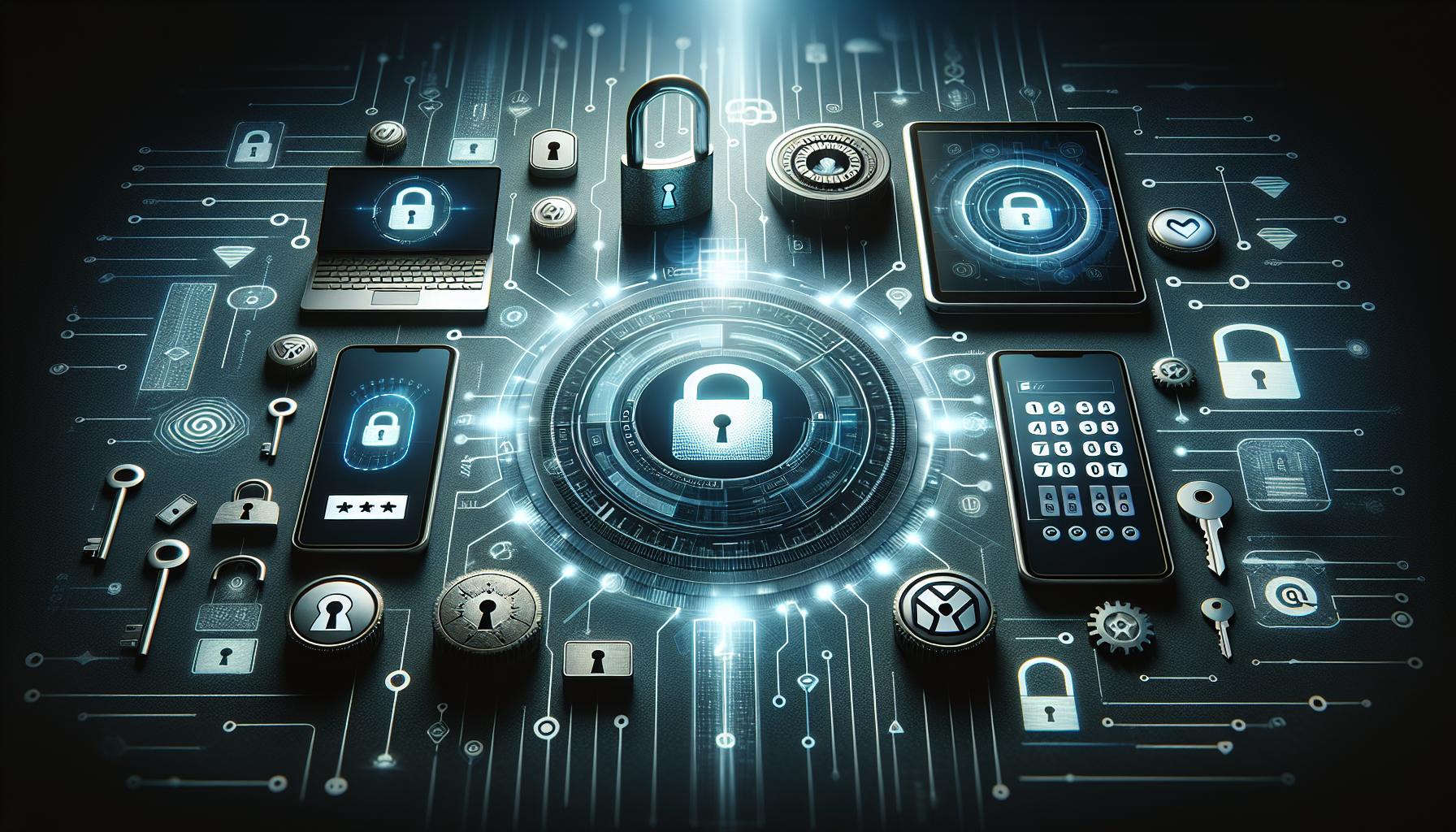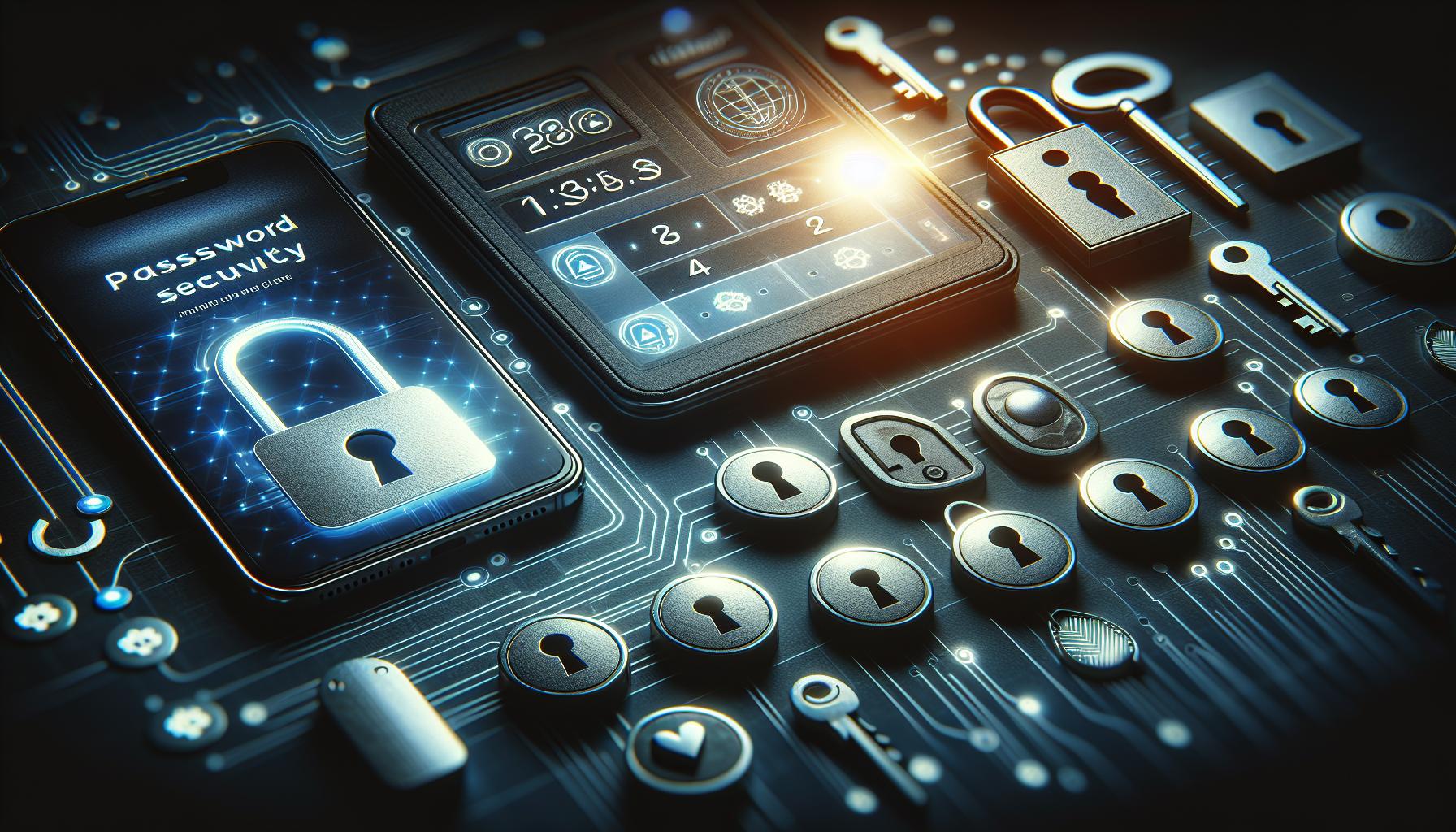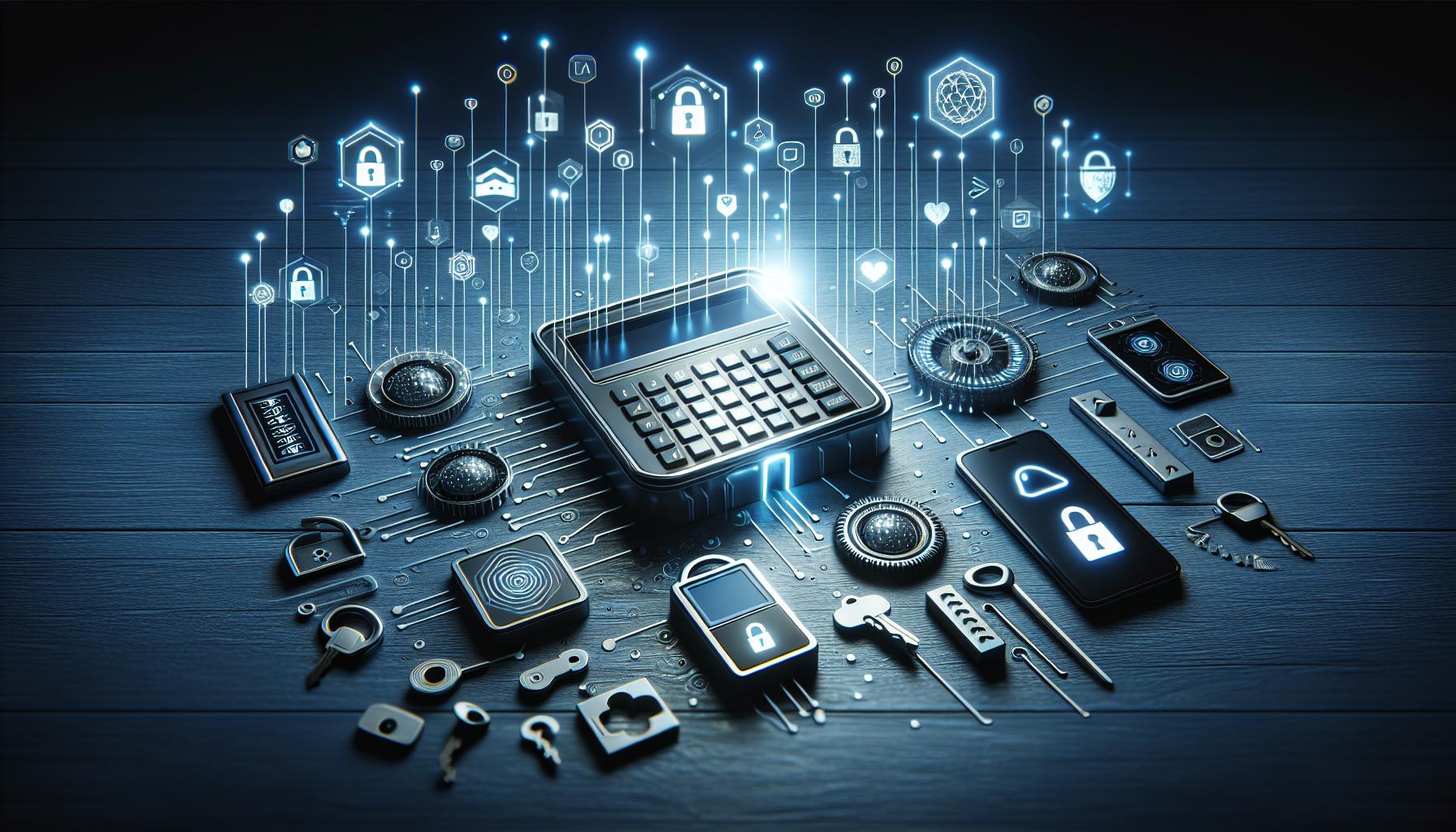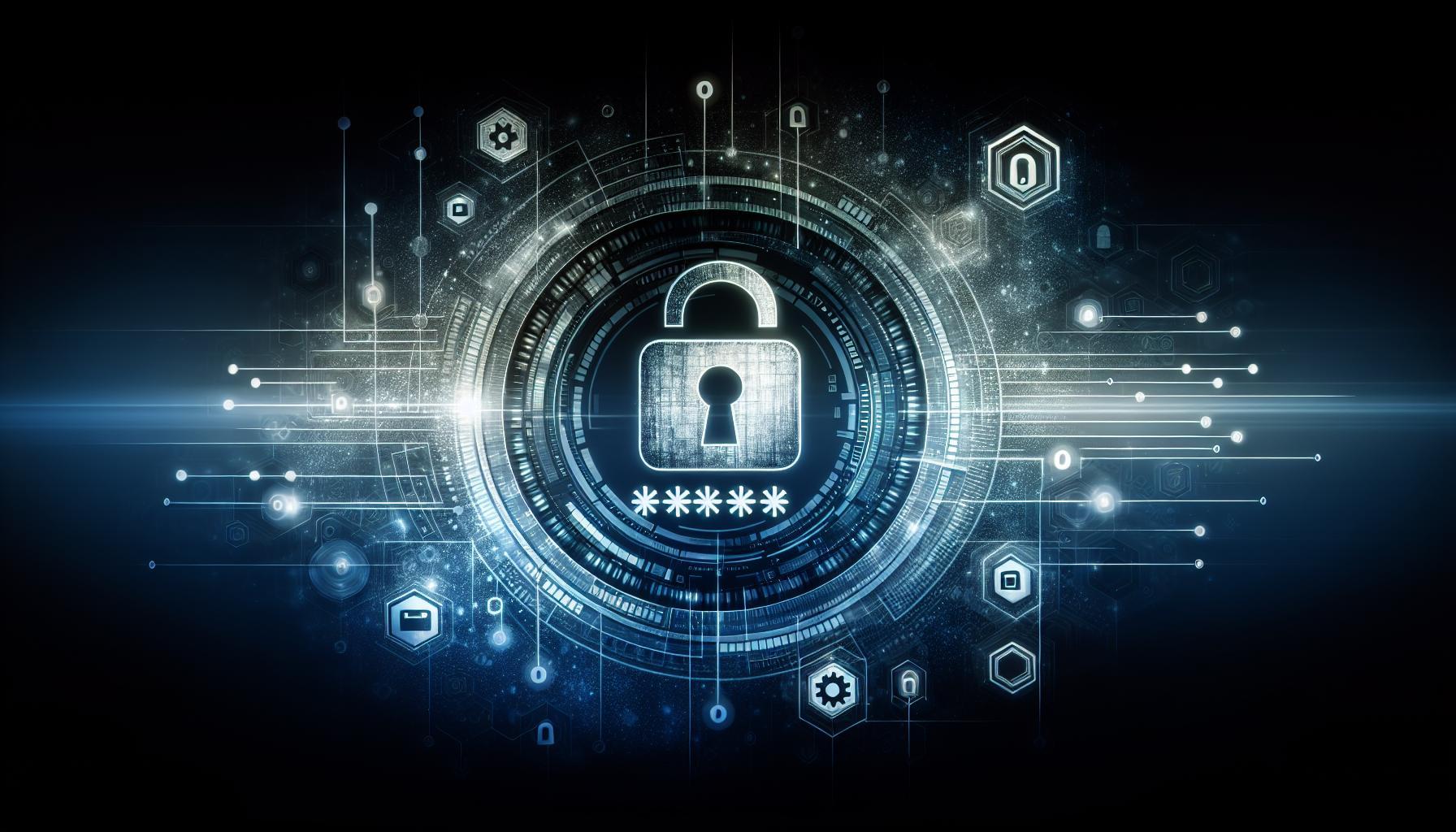In today’s digital landscape, password security is more crucial than ever, as cyber threats loom large. Understanding what to do after a breach can make a notable difference in protecting your personal and sensitive details. This guide will outline essential steps to take if your passwords have been compromised, ensuring you regain control and enhance your digital safety.
Understanding the Consequences of a Hacked Password
An alarming statistic shows that compromised passwords are responsible for a significant portion of security breaches today. When a password is hacked, the consequences extend beyond mere inconvenience; they can lead to severe legal, financial, and reputational damage for both individuals and organizations. Understanding these ramifications is crucial for anyone navigating the digital landscape.
Legal and Financial Repercussions
when a password breach occurs,legal ramifications can follow swiftly.Companies may face lawsuits for failing to protect customer data, leading to hefty fines and settlement costs. As an example, organizations that suffer data breaches can incur expenses related to forensic investigations, credit monitoring for affected customers, and potential regulatory fines, which can accumulate quickly. According to Jetpack, many firms have experienced legal action due to inadequate security measures that resulted in compromised customer information.
Reputational Damage
In today’s hyper-connected world, reputation can be everything.A single incident involving compromised passwords can taint an organization’s public image. Consumers frequently enough react with distrust towards companies that have suffered breaches, leading to a decline in customer loyalty. Moreover, organizations may lose their competitive edge as potential clients shy away from partnering with businesses that demonstrate vulnerability to cyber threats. This impact can last for years, necessitating a substantial investment in reputation management and recovery strategies.
Personal Costs and Identity Theft
For individuals, the fallout from hacked passwords can also be devastating. The risk of identity theft rises significantly once personal accounts are compromised. Hackers can gain access to sensitive information, leading to unauthorized transactions and financial loss. To illustrate, if someone’s email is hacked, it may also grant attackers access to bank accounts, credit cards, and even private records. Taking immediate action, such as changing passwords and enabling two-factor authentication, is crucial in reducing these risks and protecting personal information from further breaches.
Ultimately, the consequences of a hacked password serve as a stark reminder of the importance of strong password management practices. Preventive measures such as implementing complex passwords, using unique passwords for different accounts, and regularly updating them can mitigate these risks. By understanding the potential fallout of compromised credentials, individuals and organizations alike can adopt more robust security measures.
Immediate Steps to Secure Your Online Accounts
To safeguard your online presence after recognizing a password breach, taking immediate action is crucial. The first line of defense is to change your passwords for all accounts that may have been affected.Aim for strong, unique passwords that incorporate a blend of uppercase letters, lowercase letters, numbers, and symbols. Following best practices in password creation not onyl helps in thwarting unauthorized access but also reinforces your overall security posture.
Establish Multi-Factor Authentication
enabling multi-factor authentication (MFA) adds an essential layer of security. MFA requires not only a password and username but also something that only the user has on them—a piece of information only they shoudl know or have access to, such as a text message verification code or an authentication app. By adopting MFA, the chances of unauthorized access decrease significantly, making it much harder for potential hackers to gain entry to your accounts.
Regular Monitoring and Security Tools
Consistently monitor your accounts for any suspicious activities or unauthorized transactions.Taking this step can help identify compromises quickly, allowing you to act before further damage is done. Additionally, using password managers can definitely help keep track of all the credentials securely, automatically generating strong passwords, and filling them in as needed. Many of these tools also include security audits to alert you if any of your passwords are weak or part of a data breach.
- Change passwords promptly after a breach.
- Enable multi-factor authentication on all accounts.
- Monitor accounts frequently for unusual activity.
- Use password managers for strong password generation and storage.
By following these essential steps, you don’t just react after an incident occurs; you actively work to enhance your protection against potential threats, ensuring that you can confidently navigate the online world. Remember, the quicker you act, the better you can secure your online accounts from further compromise.
Evaluating the Damage: Identifying Compromised Information
In today’s digital landscape, the implications of compromised data can be staggering. When passwords are hacked, the immediate response should involve a thorough evaluation of the damage to mitigate potential fallout. Identifying the specifics of what information has been compromised is crucial—not only for securing your accounts but also for protecting sensitive data from further exploitation.
Key Steps to Identify Compromised Information
To effectively assess the damage, you’ll want to follow several key steps:
- Review Security Alerts: Many platforms notify users of suspicious activity. Check your email and account settings for any alerts regarding unauthorized access.
- Audit Account Activity: Look through your recent account activity. This can often reveal unauthorized transactions or credentials that could have been altered.
- Check for Data Exposure: Utilize tools like Have I Been Pwned? to see if your email or phone number has been associated with known data breaches.
- Change Your Passwords: Immediately update passwords for affected accounts, ensuring they are strong and unique to each service.
Assessing the Scope of Compromise
Understanding the extent of the breach is vital. This involves recognizing which accounts were affected and what kind of information was accessible. For example, if a social media account was compromised, personal messages, contact lists, and even financial information linked through apps could be vulnerable. Establishing a clear map of compromised accounts can help to prioritize which ones to address first, especially if sensitive information such as financial data is at risk.
Creating a Compromise Checklist
A practical approach is to create a checklist that guides you through this evaluation. Consider including the following items:
| Check Item | Status |
|---|---|
| Account Review Completed | Yes/No |
| Password Changed | Yes/No |
| Security Questions Updated | yes/No |
| Two-factor Authentication Enabled | Yes/No |
By systematically evaluating the damage and identifying compromised information, individuals and organizations can take actionable steps to safeguard their digital lives in the wake of a security breach. This proactive approach not only prevents further unauthorized access but also strengthens overall security posture for the future.
Strengthening Your Security: Best Practices for Future Protection
The digital age necessitates vigilant protection against cyber threats, especially after an incident involving compromised passwords. Securing your accounts and data is no longer optional; it’s a necessity. Understanding the best practices to bolster your cybersecurity can greatly reduce the chances of falling victim to subsequent attacks after experiencing a breach.
Implementing Strong Password Strategies
One of the most fundamental yet effective methods to enhance your security posture is through strong password hygiene. Here are key techniques:
- Create Complex Passwords: Combine upper and lowercase letters, numbers, and special characters. Aim for a minimum of 12 characters.
- Avoid Common Passwords: Steer clear of easily guessable passwords like “123456” or “password.”
- Use Unique Passwords for Different Accounts: This way, if one account is compromised, others remain secure.
Consider utilizing a password manager to help generate and store complex passwords securely. By implementing these strategies, you can minimize the risk of unauthorized access.
Enabling multi-Factor Authentication (MFA)
After a password breach, enabling multi-factor authentication is crucial. MFA adds an additional layer of protection by requiring more than just a password to access your accounts.This might include a code sent to your mobile device or an email confirmation.
- Use Authenticator Apps: Apps like google Authenticator or Authy simplify the process of acquiring unique codes.
- Enable SMS or Email Alerts: Receiving alerts for unusual login attempts helps you respond quickly to potential threats.
Regular Software Updates and Security patches
Keeping your software up to date is vital in protecting against vulnerabilities that hackers exploit. Regular updates often include security patches, ensuring you’re shielded from the latest threats.Follow these measures as part of your routine:
- Schedule Regular Checks: Set reminders to check for software and operating system updates regularly.
- Utilize Automatic Updates: Enable this feature wherever possible to ensure you always run the latest versions.
Secure Your Network
Your home or office network can be a weak point if not properly secured. Here’s how to fortify it:
- Change Default Router Settings: Modify default usernames and passwords for your router to thwart unauthorized access.
- Use WPA3 Encryption: Encrypt your Wi-Fi network with the latest security protocols to fend off intruders.
By integrating these cybersecurity best practices, you not only protect your accounts post-breach but also establish a robust framework for enduring digital security. Recognizing the importance of these actions is a critical step toward preventing future incidents as discussed in “How to Hacked Passwords: What to Do Next.”
When to Seek Professional Help: Knowing Your Limits
When faced with the situation of a hacked password, many individuals attempt to resolve the issue themselves, frequently enough underestimating the complexities involved. While taking initial steps such as changing passwords or enabling two-factor authentication can be beneficial, there are distinct scenarios where seeking professional assistance is crucial. Recognizing the limits of your knowledge and the potential fallout from a security breach can guide you in making informed choices.
Understanding the Complexity
The landscape of digital security is ever-evolving, with hackers employing increasingly complex techniques. If you find yourself in a situation where simple recovery methods fail, you might potentially be up against advanced threats that require expert intervention. For instance, if sensitive information or financial data is compromised, it’s important to seek help before further damage occurs. Professionals can provide specialized tools and strategies that are not readily available to the average user.
Signs It’s Time to Get Help
Several indicators can suggest that it’s time to consult with a cybersecurity expert:
- You’ve tried self-recovery without success: If your efforts to reset passwords or regain access have been unsuccessful, enlisting a professional can save time and resources.
- Multiple accounts are affected: If more than one account has been compromised, it might indicate a larger security issue that needs expert analysis.
- Presence of malware: If you suspect that your device has been infected with malware, this can further complicate recovery efforts and need professional remediation.
- Unusual activity continues: Persistent unusual behavior on your accounts—even after taking preventive measures—can signify that hackers still have access.
The Risks of DIY Recovery
Attempting to solve hacking issues without proper knowledge and tools can sometimes exacerbate the problem. For example, using unverified software to recover passwords might inadvertently lock you out permanently or lead to data loss. Moreover, failing to fully secure your accounts can leave open vulnerabilities. Engaging security professionals ensures not only that immediate issues are addressed but also that future risks are mitigated through complete audits and security improvements.
In the challenging realm of understanding how to proceed after a hacking incident, knowing when to seek professional help can be the difference between swiftly regaining control and facing prolonged, damaging consequences. By assessing your limitations and recognizing the signs of deeper issues, you can take proactive steps in securing your digital life.
The Importance of Regular Security Audits and Monitoring
regular security audits and monitoring are crucial in an era where cyber threats are increasingly sophisticated and prevalent. Research indicates that a staggering number of data breaches occur due to weak or compromised passwords, and organizations frequently enough remain unaware of lurking vulnerabilities until it’s too late. Implementing a proactive audit and monitoring strategy can make the difference between thwarting an attack and suffering significant losses.
Why Regular Security Audits matter
Conducting regular security audits allows organizations to identify and rectify weak points in their digital defenses. A comprehensive audit involves examining password policies,access controls,and system vulnerabilities. As a notable example, tools like Enpass not only help in the management of passwords but also provide insights into password strength and breach monitoring, alerting users to potential security threats [[1]](https://support.enpass.io/app/audit/using_password_audit_in_enpass.htm). Regular checks can ensure that passwords are not easily guessable and that users are not using old, compromised passwords which hackers can exploit.
key reasons to prioritize security audits include:
- Identifying weak passwords that can lead to unauthorized access.
- Establishing compliance with industry regulations and standards.
- Mitigating risks associated with data breaches and cyberattacks.
- Enhancing overall organizational security posture through continuous monitoring.
The Role of Monitoring in Cybersecurity
Monitoring plays a complementary role to audits by providing continuous oversight of systems and user activities. Regular monitoring can quickly detect unusual behavior or unauthorized access attempts, allowing for rapid response to potential breaches.For example, services from White Knight Labs focus on analyzing Active Directory password hashes, revealing any compromised passwords while providing organizations a chance to address these vulnerabilities before they can be exploited [[2]](https://whiteknightlabs.com/password-audit-service/).
Implementing a robust monitoring system can enable organizations to:
- receive real-time alerts about suspicious activities.
- Audit user access logs for anomalies.
- Pinpoint vulnerabilities affecting specific applications or user accounts.
Ultimately, by embracing a culture of regular security audits and monitoring, organizations can stay one step ahead of potential threats. They not only fortify their defenses but also foster a safer digital environment, significantly reducing the risk of facing the consequences described in “How to Hacked Passwords: What to Do Next.” Taking these proactive measures is essential for any organization aiming to safeguard its digital assets effectively.
Rebuilding trust: How to Communicate with Your Contacts
Following a password breach, the way you communicate with your contacts plays a pivotal role in regaining their trust.To effectively navigate this challenging scenario, clear and obvious interaction is essential. A staggering statistic shows that 60% of customers will stop doing business with a company after a data breach, making it crucial to act swiftly and thoughtfully.Engage your contacts with timely updates that address the situation directly, showing empathy and a commitment to protecting their information moving forward.
Be Transparent About the Incident
When informing your contacts about the breach,transparency is key. Begin by explaining what happened in straightforward terms. Provide details such as how the breach occurred, what data may have been compromised, and the actions being taken to rectify the situation. As a notable example, you could outline the timeline of the breach finding, how long it lasted, and when your team took action. This openness can definitely help to mitigate fears and rumors.
- Use direct language: Avoid jargon to ensure everyone understands the seriousness of the breach.
- Outline your response plan: Clearly describe the steps you’re taking to secure affected accounts and prevent future incidents, such as enhancing security protocols or upgrading password policies.
- Encourage engagement: Invite your contacts to ask questions or express concerns, fostering a dialogue that can help rebuild their trust.
Offer Practical Solutions
Along with communicating the breach details, provide practical steps your contacts can take to protect themselves. recommend actions such as changing passwords across affected accounts and monitoring for suspicious activity. An example could be sending a follow-up email with a checklist on how to reset passwords securely and avoid potential phishing scams.
| Action | Description |
|---|---|
| Change Passwords | Update all passwords for compromised accounts and any other accounts using similar passwords. |
| Enable Two-Factor Authentication | Add an extra layer of security to accounts by requiring a second form of verification. |
| Monitor Accounts | Regularly check bank statements and online accounts for unauthorized transactions or changes. |
| Stay Informed | Subscribe to security alerts from relevant services to stay updated on potential threats. |
Maintaining ongoing communication is vital long after the initial breach notification. Regular updates on security improvements and continuous reminders about safe online practices will reinforce your commitment to their security and help restore trust. By demonstrating proactive measures, you not only reassure your contacts but also significantly reduce the likelihood of distrust lingering after the incident.
Staying Informed: Keeping Up with Cybersecurity Threats
Staying ahead in the rapidly evolving landscape of cybersecurity is not just beneficial but essential, especially after an incident involving compromised passwords. The importance of remaining informed about ongoing threats and vulnerabilities cannot be overstated, as it equips individuals and organizations with the knowledge they need to protect themselves effectively.Given that a significant percentage of breaches result from stolen credentials, understanding how to respond to such situations is crucial.To maintain an up-to-date awareness of cybersecurity threats, consider implementing the following strategies:
- Subscribe to Cybersecurity Newsletters: Many organizations provide regular updates about the latest threats, tools for protecting against them, and best practices. Notable sources include the Cybersecurity and Infrastructure Security Agency (CISA), which offers timely cybersecurity alerts and advisories that help individuals and businesses stay informed about immediate dangers that may affect them. Visit their site for regular updates here.
- Follow Influential Cybersecurity Blogs and Podcasters: Engaging with content from experts can provide deep insights into evolving threats and strategies for defense. Explore popular platforms like Hak5 and The Cyber Mentor on YouTube or listen to podcasts like Darknet Diaries to gain both foundational knowledge and specific strategies for protecting against ransomware and phishing attacks.
- Participate in Cybersecurity Communities: Consider joining forums and communities that focus on cybersecurity. Not only can these spaces provide the latest information,but they also allow for discussions where real-world experiences are shared. Reddit’s r/cybersecurity is a great resource.
Monitoring the cybersecurity landscape should become a regular part of your routine, especially after experiencing a breach involving hacked passwords. Building a habit of checking advisories and news can help you identify vulnerabilities promptly. Moreover, adopting a proactive approach to cybersecurity can involve utilizing tools and practices learned from reputable sources. As an example, if you discover that a password you use has been compromised, it’s critical to follow up by changing it immediately and implementing multi-factor authentication on your accounts to add a layer of security.
As cybersecurity threats continue to evolve, having a strategic plan for staying informed will empower you to take the necessary steps in response to incidents like hacked passwords.Recognizing the warning signs and understanding how to react allows individuals and businesses to not only react but also to bolster defenses against future attacks.
Q&A
How to Hacked Passwords: What to Do Next?
If your password has been hacked, the first step is to change it immediately. Use a strong and unique password that combines letters, numbers, and symbols. This is crucial to securing your account and preventing further unauthorized access.
After changing your password, consider enabling two-factor authentication (2FA) for an extra layer of security. Additionally, monitor your accounts for suspicious activity and inform relevant institutions if sensitive information has been compromised. For more tips, check out our guide on password security best practices.
What are the signs that my password has been hacked?
Signs of a hacked password include unusual account activity, such as unauthorized transactions or messages you didn’t send.If you receive password reset emails that you didn’t initiate, that’s another strong indicator.
Be vigilant for any notifications from your email provider or social media platforms alerting you to suspicious logins. If you suspect your password is compromised, act quickly by changing it and securing your account.
Why do passwords get hacked frequently?
Passwords often get hacked due to weak security practices like using simple passwords, reusing them across multiple accounts, or falling for phishing scams.Hackers exploit these vulnerabilities easily.
Many users still opt for passwords that are easy to remember, like birthdays and simple sequences, making them easy targets. implementing multi-factor authentication can help mitigate these risks significantly.
Can I recover my account after a password hack?
Yes, you can recover your account after a password hack by following the recovery procedures provided by the service. Typically, you will need to verify your identity through email or SMS.
Once you’ve regained access, change your password to something strong and unique. It’s also advisable to review your account settings and update security questions and recovery options.
How can I protect my passwords from being hacked?
To protect your passwords, use a password manager to generate and store complex passwords securely. Always enable two-factor authentication to add an extra layer of protection.
Regularly review your accounts and change passwords frequently. Avoid using the same password for multiple sites, as this increases risk. For more tips on strong passwords, see our password security guide.
What should I do if I notice unauthorized activity?
If you notice unauthorized activity on your accounts, immediately change your passwords and enable two-factor authentication. Notify your bank or service provider about any suspicious actions.
It’s important to review recent transactions and report any fraudulent ones quickly.Consider freezing your credit if sensitive information is at risk.
Is it safe to use public Wi-Fi for banking or sensitive transactions?
Using public Wi-Fi for banking or sensitive transactions is risky and can expose your information to hackers. Avoid accessing sensitive accounts over unsecured networks.
Consider using a virtual private network (VPN) to encrypt your connection.Always log out of your accounts when finished,and avoid saving passwords on public devices.
Insights and Conclusions
understanding how passwords can be hacked and knowing what to do next is crucial for safeguarding your personal information. Start by recognizing the signs of a compromised account, such as unusual activity or unexpected login attempts. If you suspect your password has been hacked, act quickly: change your password immediately, enable multi-factor authentication for added security, and monitor your accounts closely for any unauthorized transactions.Create strong, unique passwords for each of your accounts to minimize risks. Using phrases or a string of words makes passwords harder to guess. Moreover, consider a password manager to help you keep track of your credentials securely.
stay informed about the latest security practices and tools.Cyber threats are constantly evolving, and so should your defenses.Continue exploring resources and educational materials on password management and online safety to empower yourself further and maintain your digital security. Remember, being proactive is the best defense against cybercrime.







